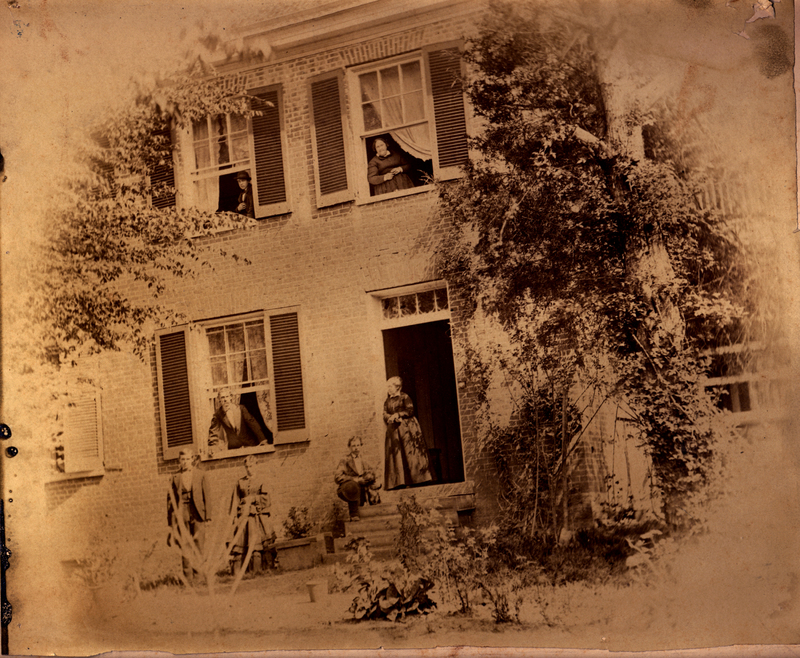Woman in Gardening
Although the men took interest in the horticultural activities occurring at Wylie House, it was the women who led the movement. In particular, Rebecca Wylie (1812-1913), her sister, Emma Dennis (1821-1899) and Rebecca’s daughter, Louisa (1839-1930) were the most involved. This is not unusual for the era as gardening was one of the few manual labor activities encouraged for women. Women were believed to be naturally inclined to gardening because the nurturing aspect of gardening adhered to the female role of caretaker and mother. In fact, gardening was thought to benefit a woman’s health and improve their constitution.

Wylie House in 1872. Emma Dennis is pictured in the top window, Rebecca Wylie in the doorway and Louisa in the yard surrounded by their garden.
Even so, there were limitations to the involvement of women in horticulture. Light labor in the garden like hoeing and weeding was viewed as beneficial, but the difficult jobs of digging or manuring were still expected to be completed by men. Also, although women were encouraged to garden around their homes, they were not accepted in most horticultural societies in the United States until after the Civil War making it difficult for them to make their mark on the greater horticultural community and record. Rebecca Wylie and Emma Dennis, although still remarkable in their dedication, adhered to most of the typical female gardening expectations of their time. It was Louisa Wylie Boisen who pushed these boundaries.

